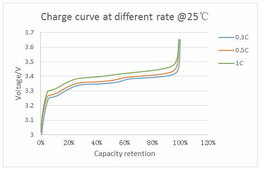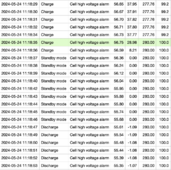Offgrid Aussi
New Member
This might be totally normal, but the default parameters for the Over Voltage Protection and Recovery in the BMS suggest otherwise (57.60 and 54.00V).
The 48V LiFePO4 Battery is made of 16 EVE LF280K A-Grade Cells (3.2V 280Ah).
They are controlled by a Seplos BMS (3.0 200A with 2A Active Balancer), that indicates that the battery is 100% full, when charged to 53.33V (3.33V per Cell).
The Off-Grid Growatt Inverter (SPF 5000 ES) stops charging when the battery reaches the 53.33 V.
It is communicating with the BMS via Growatt CAN Protocol.
Default Params set in BMS:
Battery Over Voltage Recovery: 54.00 V
Battery Over Voltage Protection: 57.60 V
Cell Over Voltage Recovery: 3.400 V
Cell Over Voltage Protection: 3.650 V
Now I wonder, if these specific cells are fully charged at 3.33V and I need to change the parameters in the BMS accordingly or if I am not using the cells to their full potential and something is holding them back.
Is anyone using these cells as well and is having the same issue?
Your thoughts are greatly appreciated.
The 48V LiFePO4 Battery is made of 16 EVE LF280K A-Grade Cells (3.2V 280Ah).
They are controlled by a Seplos BMS (3.0 200A with 2A Active Balancer), that indicates that the battery is 100% full, when charged to 53.33V (3.33V per Cell).
The Off-Grid Growatt Inverter (SPF 5000 ES) stops charging when the battery reaches the 53.33 V.
It is communicating with the BMS via Growatt CAN Protocol.
Default Params set in BMS:
Battery Over Voltage Recovery: 54.00 V
Battery Over Voltage Protection: 57.60 V
Cell Over Voltage Recovery: 3.400 V
Cell Over Voltage Protection: 3.650 V
Now I wonder, if these specific cells are fully charged at 3.33V and I need to change the parameters in the BMS accordingly or if I am not using the cells to their full potential and something is holding them back.
Is anyone using these cells as well and is having the same issue?
Your thoughts are greatly appreciated.




